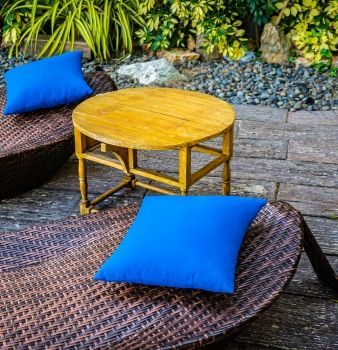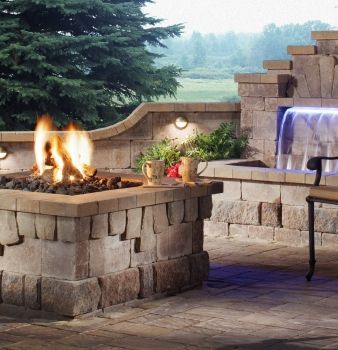
THE RIGHT WAY TO INSTALL MANUFACTURED STONE VENEER
By Jeff Posted August 5, 2014


THE RIGHT WAY TO INSTALL MANUFACTURED STONE VENEER
By Jeff Posted August 5, 2014 In Blog
Provided you do not live in a region where old buildings are the norm where real stone is standard throughout the neighborhood, chances are the stone that you see is manufactured. If you’re a contractor looking for tips on how to install manufactured stone veneer, look no further, as there are some great tips for the job right here. However, before delving into the crash course on how to do it, let’s first take a look at what exactly it is.
WHAT IT IS
Believe it or not, manufactured stone is nothing new. Indeed, veneer stone companies have spent approximately the last thirty years or so perfecting their formula so that it appears more and more – remarkably so – like the real thing. What is it, exactly? While real stone is igneous rock, extracted from the Earth and comes in an astounding array of different sizes and colors, manufactured stone is that which is not quarried directly from Earth.
The terminology “veneer” itself implies something that is decorative or cosmetic with a functional element. It is applied on top of the surface of an original structure. For instance, installing a stone veneer fireplace surround initially made of brick delivers the impression that the fireplace is composed of real stone. Manufactured veneer is typically composed of Portland cement for durability, aggregates to lighten the weight of the stone, and iron oxides for manipulating the pigment of the stone.
Making it a bit more difficult for stone veneer installation, manufactured stone has not yet reached the DIY level of ease when it comes to the task (however it is not far from that state, so contractors, take advantage now!). Understanding that it is in fact artificial, unfortunately the installation process is still a full-blown masonry job with plenty to learn before attacking the endeavor. But fret not, after overcoming a bit of a learning curve, the job can be done – and done spectacularly. On an important side note, an exterior job, such as that of installing stone veneer siding to your house is a bit more complex than an interior job, for the very reason of precipitation. Unlike interior jobs, exterior jobs require an extra task: that of water-proofing. The surface beneath the veneer stone needs to be waterproofed, particularly because veneer is not by any means made to act as a barrier against a rainy spell – and so, extra caution must be taken.
In the case that you are laying exterior stone veneer, preparing the structure for waterproofing can be done with builder’s felt which is similar to roofing paper, builder’s paper which is a specific kraft-paper material, or house wrap.
HOW TO DO IT
Despite what may seem like high maintenance, stone veneer actually poses an easy way to create the look you are going for when it comes to creating an authentic look.
Here is a short rundown of installing manufactured stone veneer. Entire manuals can be written about the process, but the basics followed by valuable tips should have you well on your way.
Just about every stone veneer installation job begins with a couple of sheets of building paper. Next, a layer of galvanized wire lath (dimpled) is securely installed over the paper which is then coated with a ½-inch coat of Type S mortar. While still wet, the mortar is scraped, or scratched to create a texture that will make it easier for the stone to cling to strongly. About 24 hours later, when the grooved coating has dried, it is time to apply the stone. Using the same Type S mortar, adhere the stones as desired and when finished, simply touch up the project with grout between the joints of the mortared stones. Note: if your stone veneer installation is envisioned to appear dry-stacked in which case no mortar is used, no grouting is necessary; mission accomplished!
Whether you are installing stone veneer siding or an indoor fireplace, here are FOUR FANTASTIC TRICKS for streamlining the process and outputting better looking, longer-lasting work.
#1 Taming wire lath: working with this material can cause all types of snags – including some dangerous ones, since the edges of the wire can be quite sharp. To make long cuts in the wire, lay the sheet on a couple of long boards, measuring the spaces between the edge of the lath and the board on either end to ensure the line you want to cut is flush with the edge of the board. Use the edge of the board to guide your cut – and for extra security, before cutting you may want to temporarily fix the lath with a few staples to the board so it doesn’t budge and causing you to make an imprecise cut
.
#2 Scratching: the tool for the job: as previously mentioned, digging grooves in your mortar creates a surface that will make it easier for stones to bond to it – and stay put! There are small tools for completing this part of the task, however, a square-notched tile mastic trowel is the perfect candidate for the job. Not only are they less expensive than other gadgets, but they scratch a larger surface area at once making for more accurate – and faster – production.
#3 Make that stone stick: using a trowel, slather a good amount of mortar on the back of a stone, making sure to create a thick enough layer (about ½ -inch) around the entire perimeter of the stone. Do this in a circular motion, which will create a small hollow space in the middle of the stone’s back to create a suction, and enforce the stone’s adherence to your scratched mortar. Be sure to keep the edges of the stone free of any oozing mortar so it does not harden and become an obstacle when it comes time to grouting.
#4 Resist cleaning up wet mortar: dropping globs of mortar here and there is pretty much par for the course when it comes to this type of project. It can be nerve-wracking when it comes to jobs that require a bit more tidiness such as installing stone veneer fireplace surround. Don’t cry over spilled mud! Simply let it dry and as it hardens, flick it away with your trowel. Trying to clean up your mess beforehand is apt to create a smeared mess more difficult to clean up.
Install, Installation, Manufactured Stone Veneer, Veneer
RECOMMENDED POSTS






